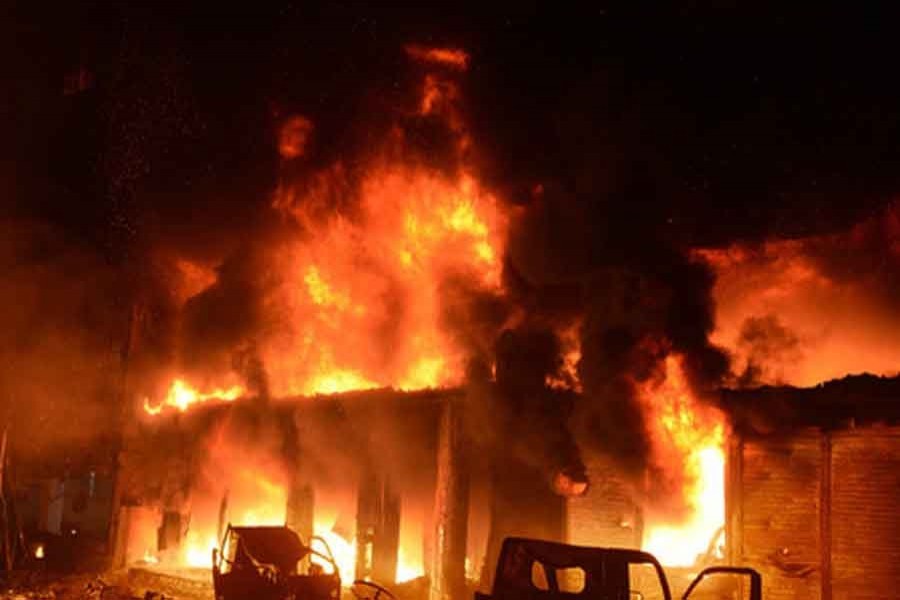Last Wednesday's devastating fire at Old Dhaka's Chawkbazar is a testimony to a disturbing fact that, the 2010 Nimtoli fire tragedy could not raise the level of awareness sufficiently among many of Old Dhaka residents about the dangers of storing and trading in inflammable chemicals in the densely populated localities. This also points to the failure of the authorities in implementing adequately the measures that were promised or undertaken to regulate storing and trading in inflammable chemicals and relocate these businesses from crowded Old Dhaka to safer places. Whatever may be the origin of the Wednesday's fire, these lapses actually are the root causes of the repeat of the Nimtoli tragedy. The Nimtoli inferno claimed 127 lives and the latest one 67. The number of people who suffered burn injuries is also substantial.
The cause of the Wednesday's fire is yet to be ascertained. An initial investigation report, prepared by the Ministry of Industries, has blamed the blast of a LPG cylinder which was being carried by a van for the fire; the fire brigade, however, is yet to determine the origin of the fire. The burnt remnants of motor vehicles and the death of their drivers and passengers in the affected areas lead to the presumption that the fire originated from some point of Churihatta intersection. The fire raged through the intersection and in a matter of seconds engulfed everything on its way and spread to a number of nearby buildings. But one particular factor---storing of chemicals and other inflammables in shops and houses---played the key role in the fast spread of the fire that struck the densely populated area connected by a plethora of narrow lanes and bye-lanes. Chemicals and other inflammables were responsible for so many deaths in the case of Nimtoli fire incident also.
Immediately after the city's worst-ever fire at Nimtoli, government leaders and top officials of relevant organizations promised to remove all storage facilities of chemicals and other inflammables from the old part of Dhaka city. But not much has happened in that direction for nearly nine years. This time too promises have come aplenty about ensuring fire safety. One can only keep one's fingers crossed about fulfillment of these promises.
Truth is that Old Dhaka itself is a deathtrap for its residents. It is the world's most densely populated area which is crisscrossed by innumerable narrow lanes and bye-lanes. Pucca structures in their thousands stand close to each other and residents find it difficult during emergencies to rush to safety from there. Besides, the emergency services like the fire brigade and ambulances find it hard to reach the places of occurrence because of narrowness of approach roads.
There is no denying that streamlining things in a densely populated area, built in an unplanned manner over centuries, is a near-impossible task. Yet the government cannot allow the people to die helplessly in the event of natural disasters or fire incidents. In the case of removing chemical shops and storages from Old Dhaka, the Dhaka South City Corporation (DSCC) and the relevant government organisations must start their work immediately. They should also constantly monitor and stop reemergence of such establishments in those areas. Besides, the DSCC in particular should interact with local people to find ways to widen the lanes and bye-lanes and make the Old Dhaka buildings safe, as far as possible, for living, even during emergencies.


